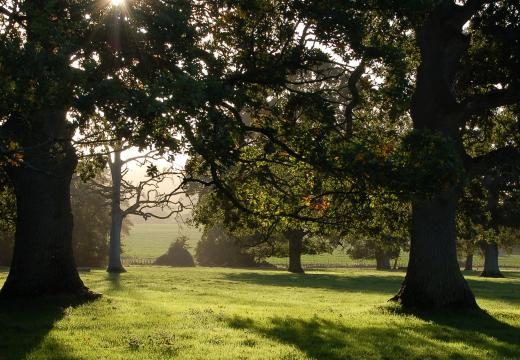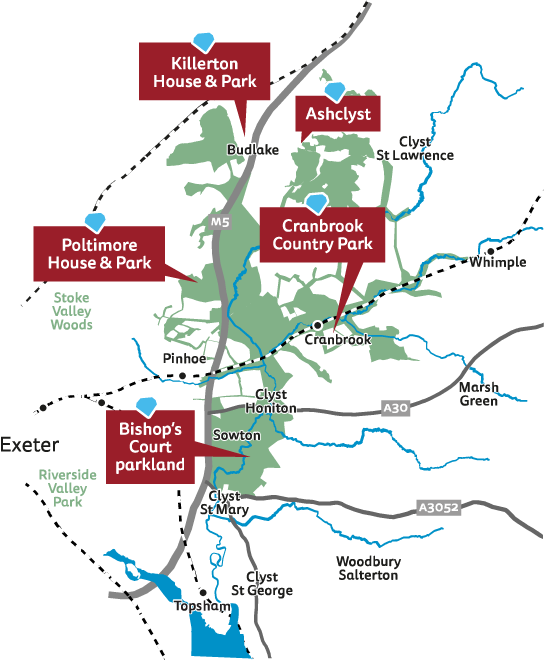About Clyst Valley Regional Park



The Clyst Valley Regional Park is a new breathing space for the growing community of Exeter and East Devon. Centred on the River Clyst, it stretches from Ashclyst Forest in the north to Topsham on the Exe estuary.
The historic gems of Killerton House, Poltimore House and Bishops Court, with their associated gardens and parklands. Traditional apple orchards. Ancient and notable trees. The huge forest of Ashclyst. Picturesque villages like Sowton and Broadclyst, with thatched and lime washed cottages, ancient stone churches and welcoming pubs. Floodplain meadows. Green lanes.
People need access to nature-rich green and blue space, without relying on the private car. That means that traffic-free trails, quiet lanes, bus and train stations need to become part of a sustainable transport network. Nature needs nurturing and sanctuary. The unique character of the landscape needs protection and management. The river needs to be freed from constraint and pollution.
There are many ways to get involved. You can sign up to our newsletter to find out about the best walks and new traffic-free trails, family activities, tree planting projects and cultural heritage updates. You can volunteer, you can help us plant trees and you can share your views on improvements to cycling and walking routes in the area. We can't wait to meet you!